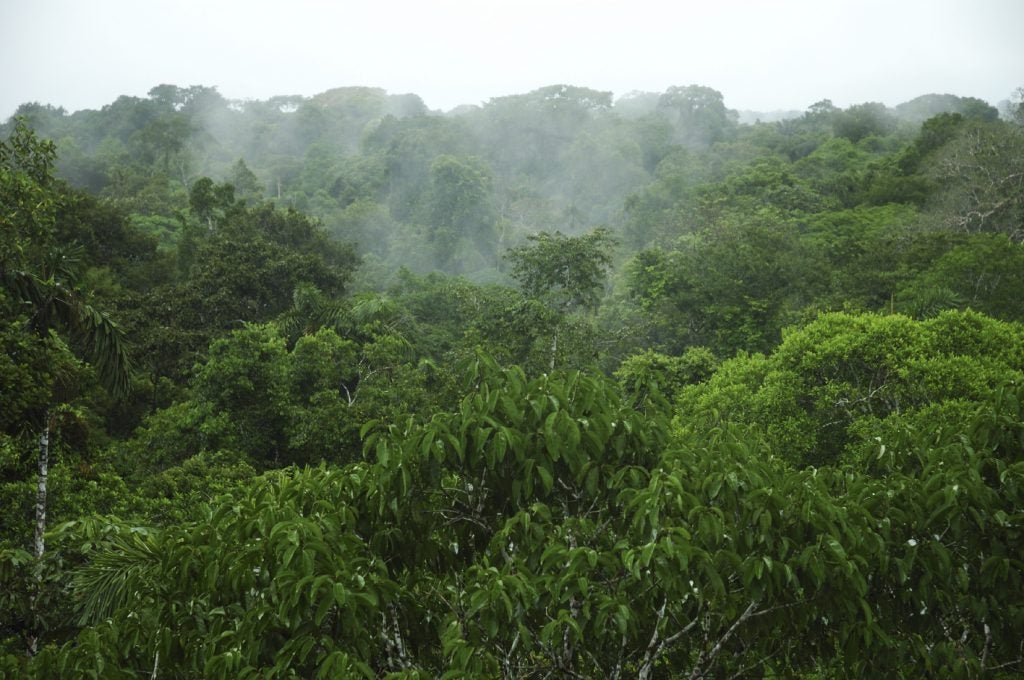
Deforestation is still a significant problem around the world, but governments are increasingly making the institutional changes necessary to limit deforestation. Credit: Flickr/Dams999
As the biennial REDD Exchange (REDDx) conference in Oslo approaches, it is a good time to review the progress Reducing Emissions from Deforestation and forest Degradation (REDD+) has made over the last year.
Deforestation still continues to be a significant problem in many parts of the world (tropical and non-tropical), so there is definitely more work to do. However, more and more of the institutional changes necessary to turn the corner on deforestation in the coming years are occurring at all levels of government. Below are some notable areas of progress we’ve seen recently on REDD+.
National programs complete Warsaw Framework for REDD+ requirements
Three countries (Brazil, Ecuador, and Malaysia) have now submitted all Warsaw Framework for REDD+ requirements to the Lima Info Hub, and 36 countries have submitted Forest Reference Emission Levels – an increase of 11 submissions since COP 23 in November 2017.
Innovation in Brazil
Notable progress has been made in Brazil, where the country’s national REDD+ committee (CONAREDD+) modified its Amazon Fund incentive system to use a “stock-flow” approach to directly benefit its nine Amazon Basin states. The approach recognizes efforts by the Amazon Basin states to not only reduce deforestation (the “flow” part), but also conserve their current forest carbon stocks (the “stock” part). A recent report funded by the Forest Carbon Partnership Facility (FCPF) explains the new system and how it should better incentivize Amazon Basin states to conserve carbon stocks and reduce deforestation.
Most important to curbing deforestation and enhancing REDD+ is for the amount and scope of results payments to national governments to increase. Until then, it will be challenging to accelerate the necessary government-led actions and policy changes.
Forest Carbon Partnership Facility countries advance
Progress is also being made in the FCPF’s Carbon Fund. The Carbon Fund board has approved or provisionally approved the Emission Reduction Programs of 11 countries. Four of those countries (Costa Rica, Chile, Democratic Republic of Congo, and Mexico) are in or starting negotiations to finalize the results-based payment terms, which should be concluded before the year’s end. It is possible that a payment for results will also occur before the end of the year.
Colombia – a step backward and a step forward
Colombia offers a mixed bag of progress and challenges. Deforestation did increase since the signing of the peace agreement, but the government is taking various actions to combat this rise in deforestation. The Colombian Supreme Court ruled that the government must protect the Amazon forest. To support the government’s efforts, the Norwegian government agreed to finance these actions through results based payments that must also include benefits to Colombia’s indigenous peoples. This complements the Colombian government’s expansion of indigenous territories in mid-2017.
REDD+ projects’ evolution in national systems
Colombia was also in the spotlight when it announced that companies would be able to meet their carbon tax responsibility through purchasing emissions reductions from REDD+ projects. Only a month ago, news came from Peru that the federal government will “nest” some REDD+ projects into its nationally determined contribution (NDC) commitments. For both countries, it is still unclear how exactly the “nesting” of the projects, benefit sharing, and accounting against NDCs will work, but these are important first steps.
Private sector deforestation reduction strategies
Collaboration with the private sector will be important for the success of REDD+ – especially in countries where agriculture commodities such as beef and soy are the main drivers of deforestation. Previous strategies were focused on using third-party verified certification schemes, but their limitations have been recognized and now a more holistic and complete solution is being pursued: the jurisdictional approach.
Multinational companies such as Unilever, Mars, Olam, and Walmart all announced their support of this strategy last year at COP 23’s Forest Day while on a panel with leaders from the Mato Grosso, Brazil and Sabah, Malaysia jurisdictions. Mato Grosso’s Produce, Conserve, and Include strategy (PCI) is probably one of the most advanced jurisdictional approaches and has recently been buoyed by both a REDD+ Early Movers (REM) MoU worth 17 million euros and a commitment of support from Carrefour.
Looking forward
While notable progress on the REDD+ front has been made over the last 6-12 months, the Global Forest Watch team at the REDDx conference will probably announce that deforestation for 2017 was still near record highs. More action is needed at all levels; perhaps more substantial actions will be highlighted at the upcoming Global Climate Action Summit to be held in September.
Most important to curbing deforestation and enhancing REDD+, however, is for the amount and scope of results payments to national governments to increase. These payments could come from the Green Climate Fund’s REDD+ results based payment Request For Proposals or transactions from the FCPF’s Carbon Fund.
Until these payments start to flow in an efficient and methodologically consistent manner, it will be challenging to accelerate the necessary government-led actions and policy changes. REDDx in Oslo could provide an opportunity to hear how we can make this happen.




